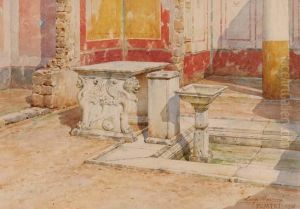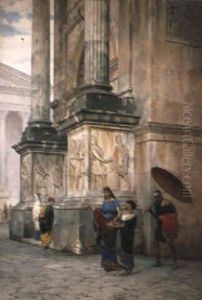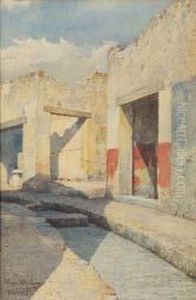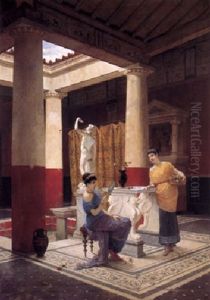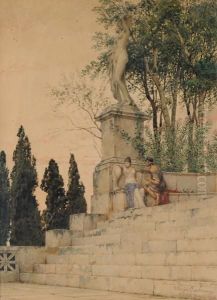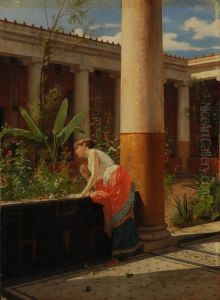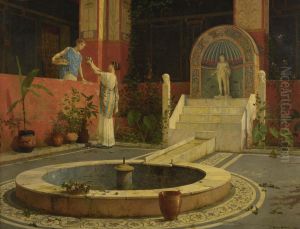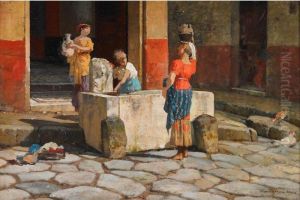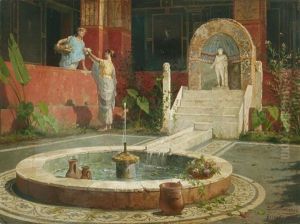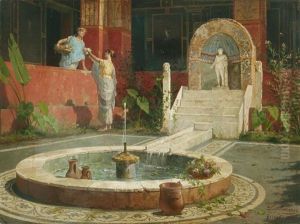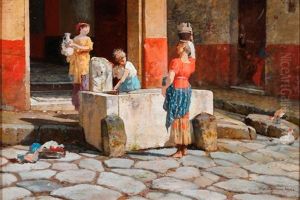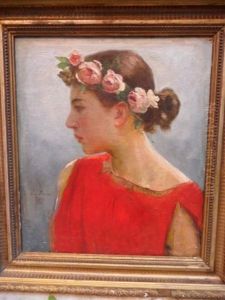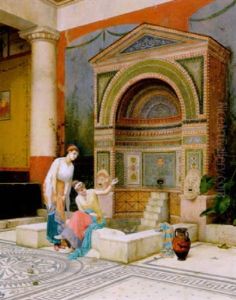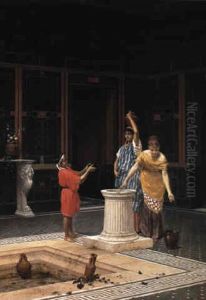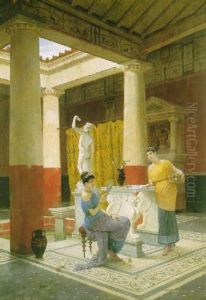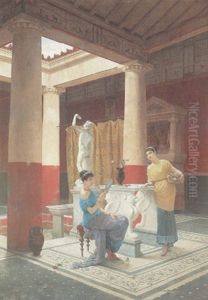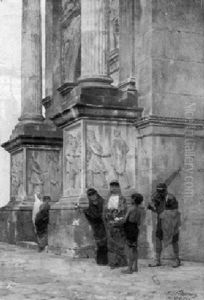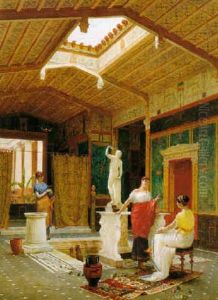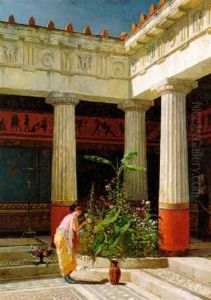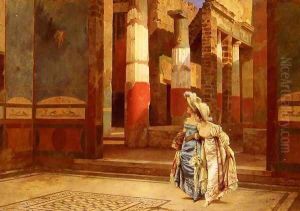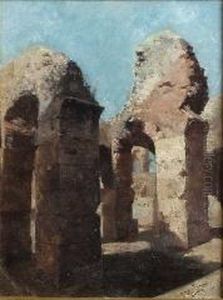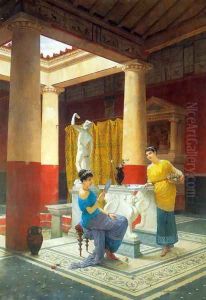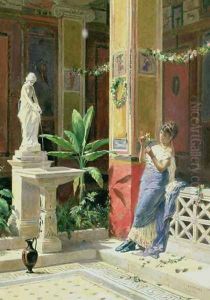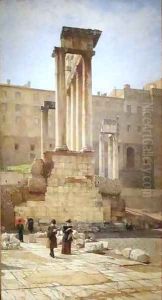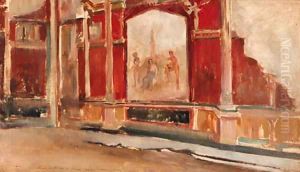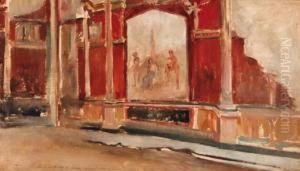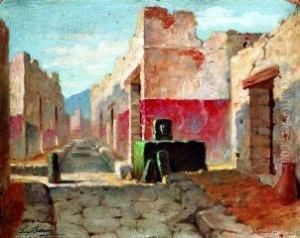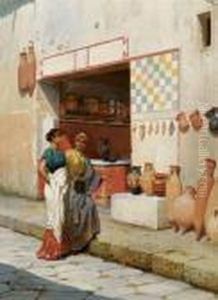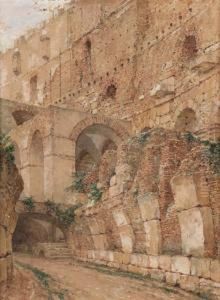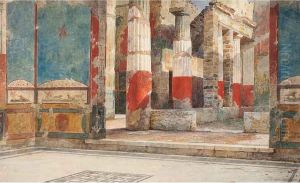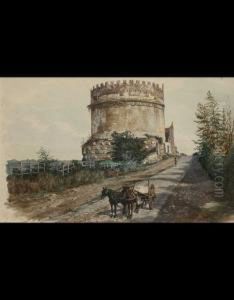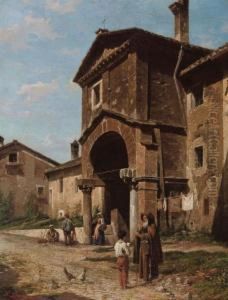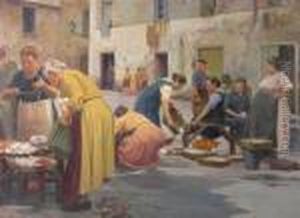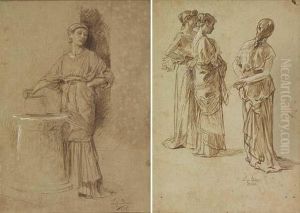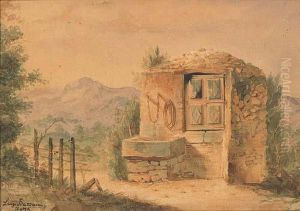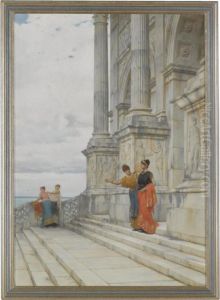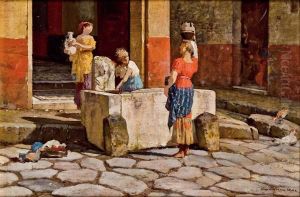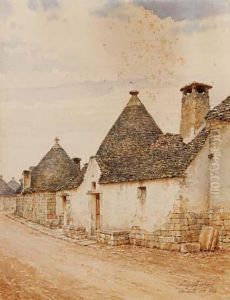Luigi Bazzani Paintings
Luigi Bazzani was an Italian painter and architect, known for his depictions of ancient Roman and Pompeian subjects. Born on March 5, 1836, in Bologna, Italy, Bazzani demonstrated an early interest in art and architecture. He pursued his studies at the Academy of Fine Arts in Bologna, where he honed his artistic skills and developed a deep appreciation for classical antiquity.
Throughout his career, Bazzani became renowned for his archaeological genre paintings, which often showcased the ruins of ancient Rome and the life of its inhabitants. His works are characterized by their meticulous attention to architectural detail and their vibrant portrayal of the past. Bazzani's paintings were not only beautiful but also educational, as they provided a glimpse into historical settings with remarkable accuracy.
Bazzani's fascination with Roman history was partially fueled by the contemporary archaeological discoveries of his time, such as those in Pompeii and Herculaneum, which captivated the public imagination. These excavations unearthed the remains of cities buried by the eruption of Mount Vesuvius in 79 AD, offering artists like Bazzani a wealth of inspiration for their work.
During his lifetime, Bazzani participated in various exhibitions, gaining recognition and acclaim. He was also involved in the restoration of historical buildings, applying his architectural knowledge to the preservation of Italy's cultural heritage. Despite being primarily known for his paintings, his contributions to the field of architecture also left a significant mark.
Luigi Bazzani's legacy lives on through his artworks, which continue to be appreciated for their historical value and artistic beauty. He died on May 19, 1927, in Rome, having left behind a rich portfolio that continues to be studied and admired by art historians and enthusiasts alike.
